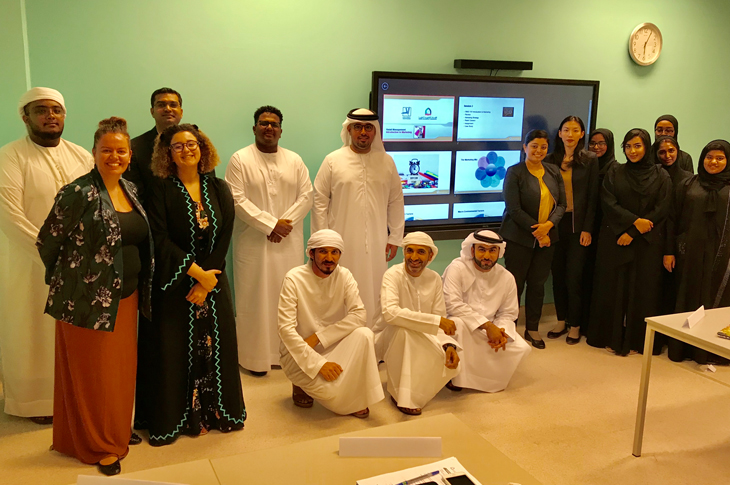UAE shift in economic approach bolstered by SAIT programming

In a Dubai classroom, a quiet yet historical moment unfolded in the fall.
There, for the first time ever at the United Arab Emirates’ Higher Colleges of Technology (HCT), men and women were enrolled in the same program — a remarkable shift underpinned by the SAIT-developed curriculum.
Scattered across the UAE, there are 16 HCT campuses — eight for men and eight for women — offering 72 programs in seven academic divisions. Until this academic year, women have only been allowed to attend individual classes on the men’s campuses.
The move to create a cohort of both sexes in two programs marks a major move, says Ian Cowley, Academic Chair for International Projects in SAIT’s Corporate Development, Applied Research and International department.
It’s also one more important step in the United Arab Emirates’ efforts to transition citizens into the private sector to rely less on ex-pat labour in the economy — a move known as Emiratization, says Cowley.
“SAIT is making a difference as they make this shift in their paradigm,” he says.
SAIT developed the curriculum for the one-year diploma retail and supply management programs, which took on a total of 30 students this fall. Three SAIT faculty members taught during the fall semester and two will remain with the program until the pilot programs finish in the summer.
In the classroom and on the job
The objective of the programs currently being piloted by HCT is to prepare students for entry-level supervisor positions. SAIT’s applied learning model is a fundamental part of the curriculum with students spending eight months in the classroom and about another four in a work-integrated learning environment.
Through it all, SAIT has consulted with local industry partners — just as it does in Calgary.
Although the UAE government has made inroads in the public sector, the private sector is predominantly run by ex-pats, who make up about 90% of the country’s population.
Cowley says organizations like DHL, Dubai Duty Free, DP World, Al Futtaim Group — who operate all the mega malls in UAE — and Landmark Group, which is the largest retail and hospitality business in the Middle East, are eager to hire program graduates.
“Industry partners want Emirati employees,” says Cowley.
Benefits both ways
While teaching students about supply and retail management in the UAE, SAIT gains a better understanding of an economy that is 12% retail in a country that has two of the world’s largest and busiest airports and is currently building a third.
“The information we learn from those partners, we can incorporate into programs here,” says Cowley.
“We’re not just teaching students.”
Learn more about how SAIT can create training solutions for your business or institution in Canada or internationally with Corporate and International Training Solutions.
This story is part of an ongoing series celebrating SAIT’s technology training and innovation.
Global Perspective
We prepare students for successful careers and lives.
SAIT'S
2020-2025
Strategic plan

Oki, Âba wathtech, Danit'ada, Tawnshi, Hello.
SAIT is located on the traditional territories of the Niitsitapi (Blackfoot) and the people of Treaty 7 which includes the Siksika, the Piikani, the Kainai, the Tsuut’ina and the Îyârhe Nakoda of Bearspaw, Chiniki and Goodstoney.
We are situated in an area the Blackfoot tribes traditionally called Moh’kinsstis, where the Bow River meets the Elbow River. We now call it the city of Calgary, which is also home to the Métis Nation of Alberta.